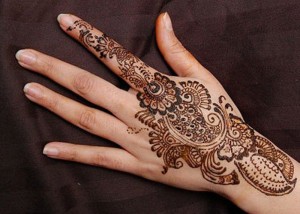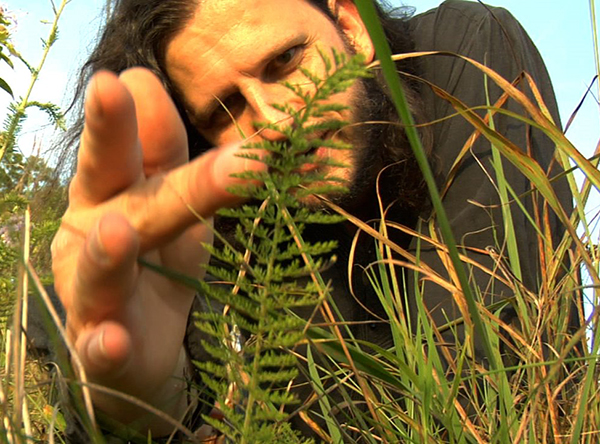Some years ago now, on the Henna Tribe forum, a conversation about using henna for foot & nail fungus came up, which left me somewhat shocked at the confidence that some of the henna artists had in using henna to treat this decidedly stubborn condition… most herbalists will agree that nail fungus is a pain in the… toe to work with. Since that time, I’ve used topical henna paste applications on numerous occasions for foot fungus (works quite well), nail fungus (also quite effective here, but even better used in addition to daily tea tree or Thuja applications), for ringworm (so far 100 percent, but of course there are undoubtedly exceptions), warts (I’ve seen it work very well on some, but not so well on long established, deep-rooted warts) and tinea versicolor (jury’s still out on this due to poor compliance or in some cases poor telling me how/whether it worked). Henna applications for the hair can be remarkably effective in their ability to address dandruff. If you want red highlights, anyway.
Henna artist Carly Andante shares a great current use of the plant in Indonesia (with pics!): “I’ve seen it used in Indonesia by bear keepers who have to wear rubber boots and work in mucky conditions … they would henna their finger nails and toe nails to stop from getting athlete’s foot. They made the henna with the leaves from their own henna tree!”
How cool.
The thing that makes henna so useful in such cases is that the same constituent that is responsible for the dark red dye (lawsone) also possesses antifungal & antimicrobial properties. Henna can leave the skin stained for 1-3 weeks (depending on the quality of the henna and the thickness/degree of keritinization of the skin); this means that during the time that the stain is visible, there is a 24/7 action of the lawsone on the skin infection. This helps immensely to address the largest drawback to treating fungal skin infections, especially of the feet: the need for several daily applications for a long period of time. I generally encourage people to use other treatments on the skin after applying the henna, for an even more comprehensive treatment. So, for example, if you’ve got nail fungus and have tried filing the nail down and applying tea tree oil a couple times a day, file the nail down, paint it with henna paste, and then continue to use the tea tree oil (or whatever) daily.
I learned from my good friend Jen Green, ND that henna has also proven helpful in the address of hand-foot syndrome, also called Palmar-Plantar Erythrodysesthesia (PPE), a side effect of some types of chemotherapy, though the study investigating this usage didn’t specify a clear mode of action.
Beyond its use for common skin issues, henna is considered to bring blessings as well as protection. These aren’t superstitions, as anyone who uses plants in this manner knows. The increasing popularity of henna on pregnant bellies isn’t just decorative, but is a ceremonial blessing of the mother and child, whether outwardly presented as that or not. Likewise, people struggling through transitions or personal trials can use henna in a way that solidifies their intentions or some other personal commitment. Henna artist Darcy Vasudev shows work on her site of chemotherapy patients who’ve chosen not to wear a wig but henna their head instead. Ah, spirit.
Of course, henna is also just cool. Both figuratively and literally – henna paste applied topically has a decidedly refrigerant effect, offering a clear cooling sensation (something to remember if you’re doing a large henna work on someone in a cool, drafty apartment in winter…). This is one of the plant’s traditional uses, arising as it did in a hot and dry climate.
So, here’s a sketchy recipe I’ve used (a fusion of recipes offered by henna artists Maxx and Nic on Henna Tribe.
mix together…
- 3-4 heaping tablespoons of henna
- 1 level tablespoon of cajeput, ravensara or tea tree oil (I usually use cajeput)
- 2 1/2 tablespoons molasses
- hot tea to get to the right consistency – this is the trickiest part; it can vary widely.
It’s more of an issue if you’re doing fine lines (if it’s too wet your lines will spread out). You want it like icing. I add a bit at a time stir, dip a spoon in an let a line drip across the bowl I’m mixing in to see how it trails. If using the henna paste for fungal skin infections, use antimicrobial herbs in your tea; perhaps calendula or (oooh!) wild bergamot.
There are numerous other recipes, many more traditional with lemon juice and sugar (I like molasses way better; eliminates the need for dabbing on lemon sugar to keep the paste from cracking as it dries), less essential oils, different essential oils; Henna Tribe is a great place to look for recipes.
Once mixed, you need to let it sit for a few hours (Moroccan) to several hours or overnight before putting it in a JAQ bottle (available real cheap here) or rolling into cones (which I’ve used and love but haven’t made). It benefits from heat, so having it under a lamp or by a heating register or woodstove will help it release its dye.
You can freeze it for later use. A small batch goes a long way. I’ve frozen ziplock bags as well as loaded JAQ bottles for easy use; just thaw in some warm water.
I like Moroccan henna best (from www.kenzi.com… awesome henna), and also have gotten really nice rajasthani henna in the past. I’ve personally found jamila difficult (can’t figure out its dye release), though it is a popular “brand” and the folks at Henna Caravan certainly do well with it and have a very clear step by step prep guide. The important thing is that in order to get very good quality henna, you should buy it from a henna artist. It’s really that much better.
Contraindications & Considerations
The most important warning: don’t ever use “black henna”… henna isn’t ever black, and stuff sold as black henna may have a chemical in it called PPD, which not only can cause permanent scarring, but also permanent nerve damage, pain and chemical sensitivities. Bad bad stuff.
A noteworthy consideration is: do you mind your skin being stained for awhile?
I’ve heard that henna is best not used on broken skin, but then also heard that its been used to treat skin injuries (the plant is astringent). One issue is that the henna could stain deeper levels of the skin, which then wouldn’t exfoliate away. To my current knowledge, this is theoretical. Another issue wouldn’t have to do with the henna, but essential oils in the paste: its common practice among henna artists to use milder oils like lavender during pregnancy.
Henna is not safe for use by those who have glucose-6-phosphate dehydrogenase (G6PD) deficiency. It should not be used by/on these people.





